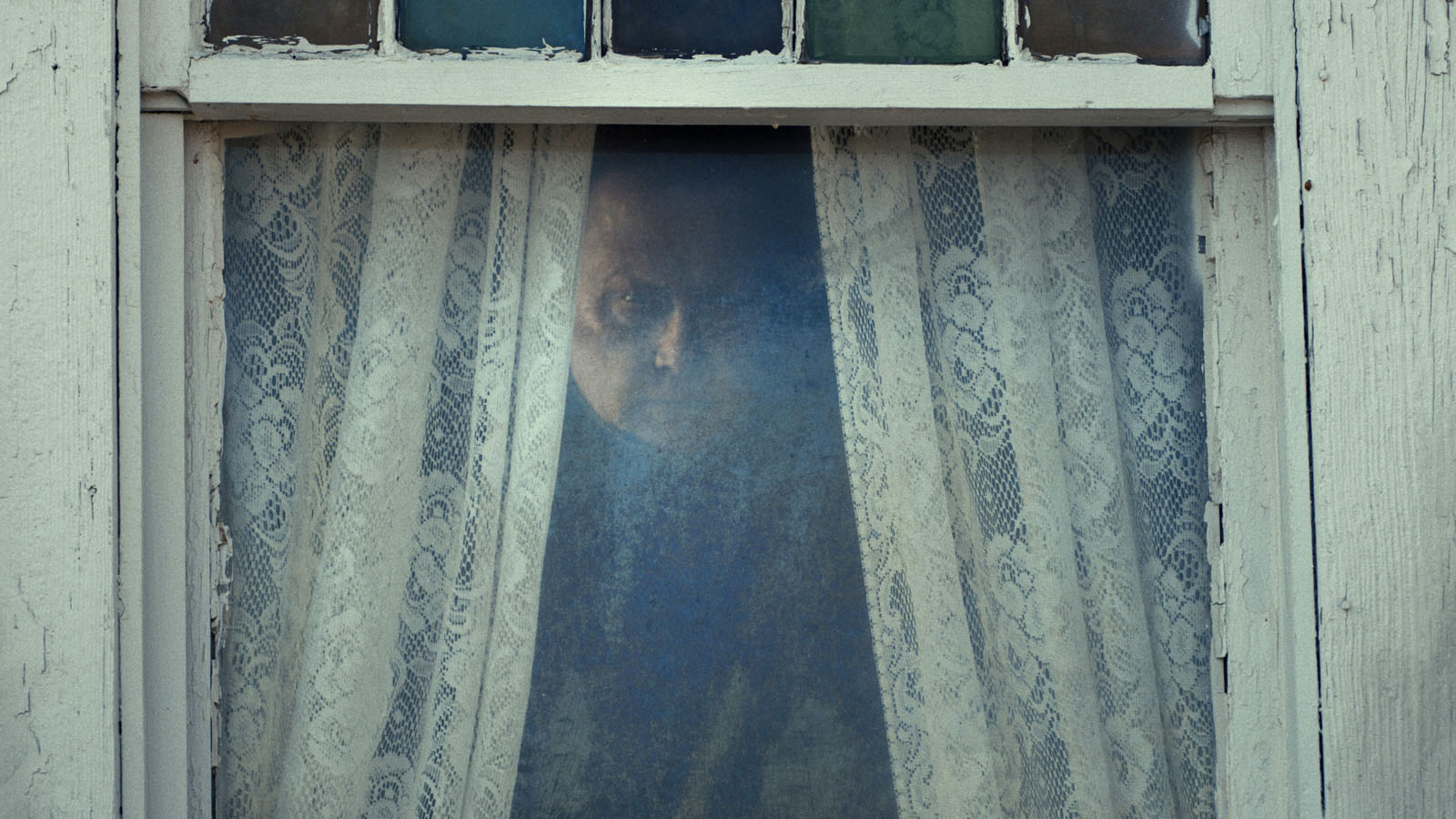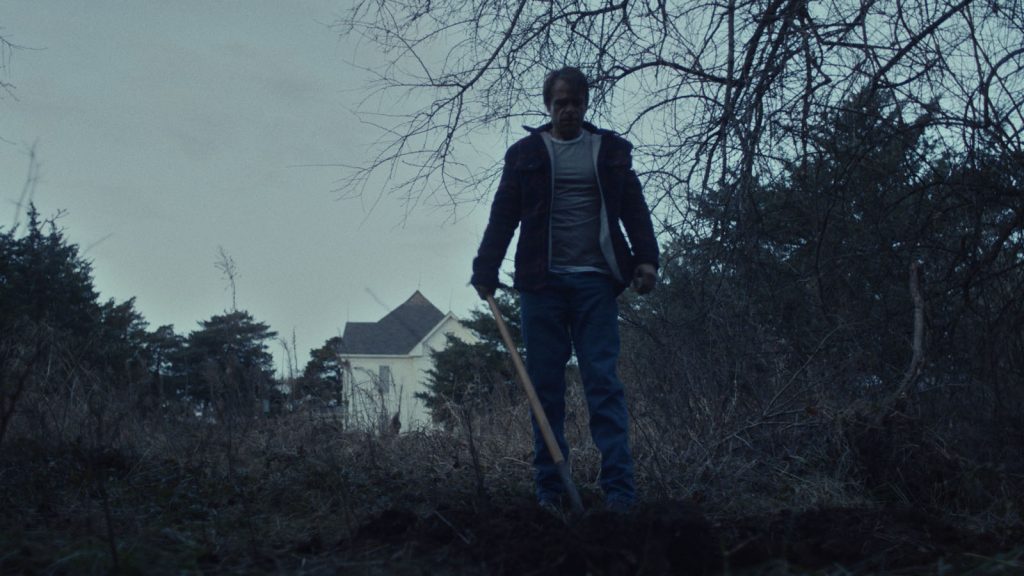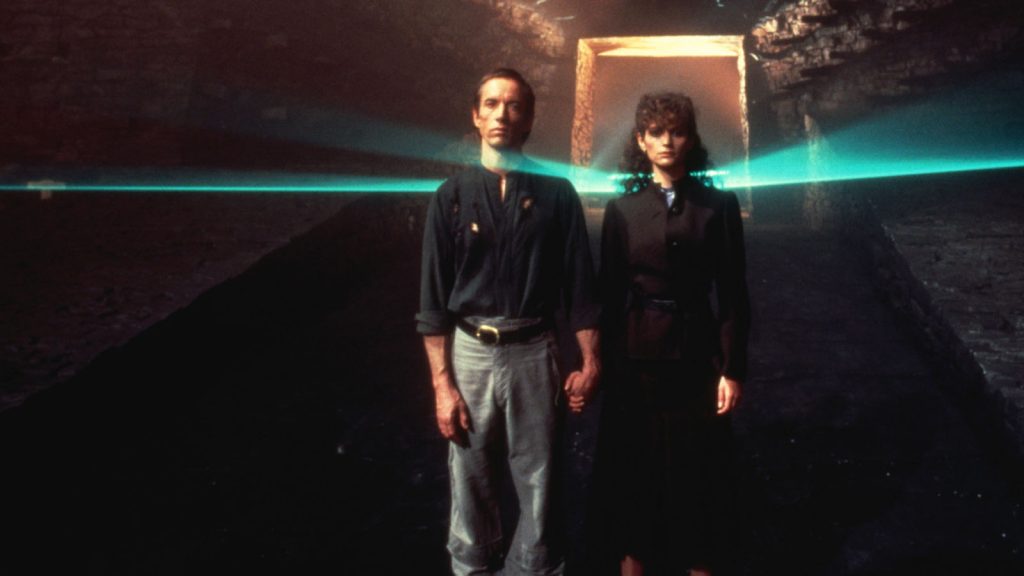
The enduring allure of Southern Gothic seems inextricable from the biblical entropy that haunts its storytelling, segregating it from the vagaries of time and culture wars like an oppressively protective porch mama. Whether it’s the blood or the soil or the architecture that’s tainted, the circuit is sealed with dread, karma, and bleak romance. The genre has found a new pair of true believers in director/editor/co-producer Vincent Grashaw and scenarist Robert Alan Dilts, whose Shudder Original feature collaboration is a studiously wrought, relentlessly sordid family saga unfolding—and folding in on itself—in some godforsaken tract of Oklahoma. In the milieu of What Josiah Saw, your hair will always be greasy, the tractor engine will never fire, and the law will always be corrupt. Grashaw and Dilts shake these tropes to life, arriving at a persuasive renewal.
Tripartite in structure, complete with discrete chapters that introduce new characters and trajectories, What Josiah Saw initially presents as a network narrative or Venn diagram of bad juju, but by the halfway point it becomes clear that its individual threads all lead back to the same immediate family—the Grahams—who hail from a barren farm in a dying town presently being gobbled up by a fracking company. Josiah Graham (Robert Patrick, sporting a Walken shock) is the patriarch, a menacing alcoholic widower ever since his beleaguered wife hanged herself on the property so many years ago. Of his three children, only the childishly god-fearing Thomas (Scott Haze) still lives at home. Josiah and Thomas’s routines, rooted in crippling codependency, are hard to bear witness to, but the portion of the film that focuses on them is animated by the elder Graham’s vision, one that promises salvation if only the men change their ways. And clean the house.

The film’s second chapter shifts tone, tilting toward sleazy rural noir and clearer stakes. We are introduced to Eli (Nick Stahl), Thomas’s older brother, who has stumbled into middle age as the gaunt phantom of a once boyishly handsome black sheep. Having done time for consorting with a minor, Eli is harangued by cops, seemingly unemployable, and up to his eyeballs in debt to a local businessman who makes him an offer he can’t refuse: Eli is to accompany a pair of violent idiots as they attempt to separate a Romani clan from their stash of gold, an encounter redolent of urban myth and by far the hoariest and most problematic passage in What Josiah Saw. Eli’s told that if he plays his part his debt will vanish and he won’t be killed, though it is hard to imagine anyone more resigned to a bad end. The last sibling to enter What Josiah Saw is Eli’s twin Mary (Kelli Garner), a woman so traumatized by her familial legacy that she long ago opted to sterilize herself, though she and her husband are now seeking to adopt. It’s probably best to leave further details of her role in the film vague and spoiler-free.
Grashaw draws from his key collaborators a bold unifying aesthetic. Composer Robert Pycior’s atonal choral music and vertiginous strings drench every chapter in portent, while cinematographer Carlos Ritter embraces penumbra both indoors and out, blowing chiaroscuro kisses at production designer Stephanie Reese’s impressive varieties of dinge and dereliction. From the actors, however, there are significant discrepancies of tone. The Southern Gothic kabuki end of the spectrum is firmly held down by Haze, whose strained naïveté recalls his performance in Child of God and cordons itself off from emotional investment. He plays a type instead of a character. Far less genre-adherent and far more involving is Stahl, Patrick’s fellow Terminator franchise alumnus. Stahl has “amiable dirtbag antihero” nailed, so much so that he doesn’t need to perform Eli’s background or plight. Rather, he embodies it in the details of his posture, breath, and bits of behavior. The relative naturalism of Stahl’s work here makes him something of an outlier, but it also makes him an anchor for the audience: once he enters the picture, every new development feels more unnerving because we recognize a history and a gravity in Eli, even while Stahl avoids displaying his actor’s homework. His relative deadpan also helps to deliver the film’s occasional injections of humor, such as the moment when Eli has to strip off some blood-stained clothes with nothing else to change into but a wet-T-shirt-night artifact with “BEST TITTIES” emblazoned across the chest. That T-shirt, along with an earlier, not-unrelated reference to the immortal line from Carrie regarding “dirty pillows,” is where the sundry strains of Southern Gothic old and new coalesce in What Josiah Saw. The film’s gallows humor and nods toward relatively recent antecedents place it in the cinematic present, while the core of its terrible tale is old as mud.

is a freelance critic and playwright.
Evil father figures account for some of the most memorable characters in genre films and beyond.
BY LAURA KERN | December 31, 2024
The English title of Christian Tafdrup’s third feature initially reads as a strategy to draw horror fans, a pleading form of genre assurance that the film’s anodyne original Danish title, Gæsterne...
BY JOSÉ TEODORO | September 12, 2022
An intriguing slice of Gothic psychological horror, She Will follows Veronica Ghent, an aging, high-maintenance, pill-popping ex–movie star recovering from a double mastectomy.
BY KATIE SMALL | July 19, 2022

This pre-Code offering packs a lot of story into its typically brisk running time, with several plot threads weaving together a (not always successful) tapestry of spooky and criminal doings.
READ MORE >
BY ANN OLSSON | Month 00, 2021

In what could be the fastest-resulting rape revenge movie, a drunken lout brutally forces himself on Ida, the young woman who doesn't return his affections, during a party over Labor Day.
READ MORE >
BY LAURA KERN | Month 00, 2021

Beast is a lot of movies in one package - fractured fairy tale, belated-coming-of-age story, psychological drama, regional horror film - but above all it's a calling card for its leading lady, Jessie Buckley.
READ MORE >
BY LAURA KERN | Month 00, 2021